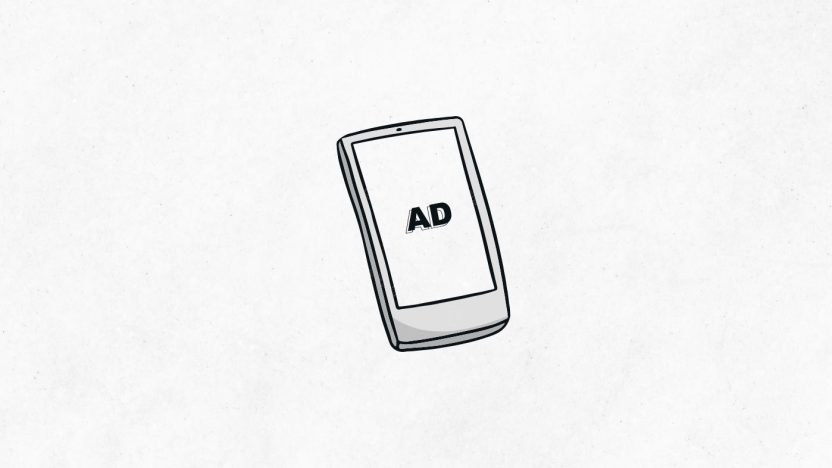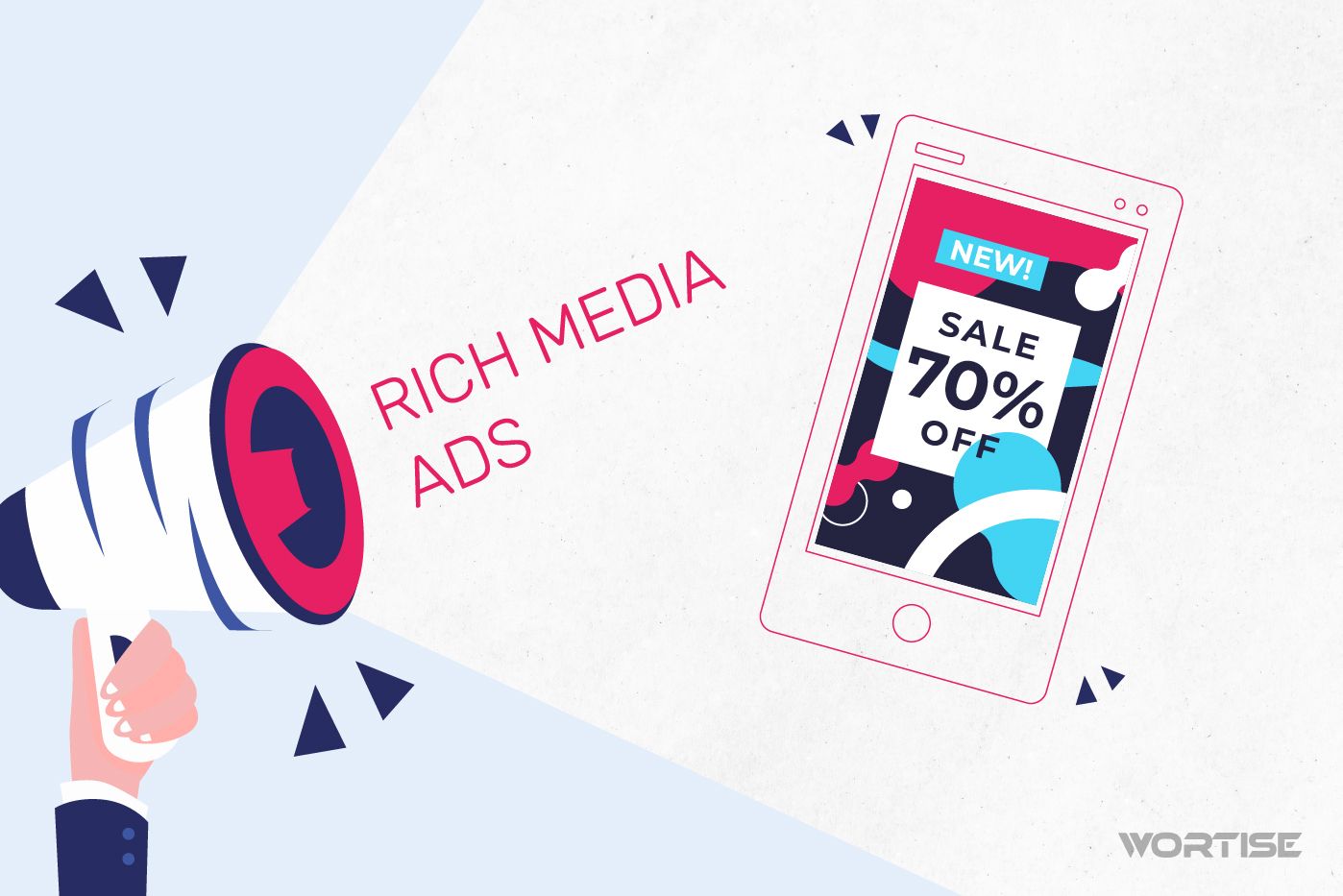Podríamos pasar una semana entera hablando de ads. ¡Hay tantos y de tantos tipos! Y esa abundancia no es solo teórica, es totalmente palpable. Cuando navegamos en internet o entramos en nuestras aplicaciones favoritas, son decenas de avisos los que aparecen y —hablemos con franqueza— aunque estén bien segmentados, a la gran mayoría le pasamos de largo. ¿Por qué entonces los publishers seguimos optando por este formato del que tanto se quejan los usuarios.¡Porque cuando un ad funciona, sí que nos da resultados! Sabiendo esto, podemos entrar en materia y hablar de los display ads y cómo hacer para que sean todo un éxito. Comencemos.
Display ads: de qué se trata
Si eres publisher o estás involucrado de cualquier manera con este apasionante mundo, seguro sabes qué son los display ads. Estos anuncios, que combinan elementos audiovisuales y texto, son altamente efectivos al capturar la atención del público y, por tanto, a darle visibilidad y rentabilidad a tu app.
Los anuncios display están configurados de distintas formas, todas con la finalidad de que el usuario se tope con ellos mientras consume todo tipo de contenidos en una aplicación o página web.
No obstante, el hecho de que sean anuncios llamativos desde el punto de vista visual, no garantiza automáticamente su efectividad. Hace falta tener a mano prácticas (que están más en el campo de lo creativo) para lograr que el espectador detenga el scroll o haga clic, vea tu mensaje y se sienta motivado a hacer caso al CTA.
Estadísticas sugieren que alrededor del 12% del tráfico web de las páginas anunciantes proviene de campañas impulsadas con Display Ads. En definitiva, es un elemento que los advertisers no pueden ignorar al momento de planificar una estrategia publicitaria.
Por estas razones, es un campo potencial para ti, publisher. Toda app que utilice la publicidad programática para monetizar debe ofrecer la posibilidad de desplegar anuncios display.
Claro está, los resultados no dependen solo de emplear este tipo de anuncios, sino de hacerlo de la mejor forma posible.
Display Ads: triunfa con estas 10 prácticas
Tanto advertisers como publishers deben tener en cuenta ciertos elementos al momento de utilizar los display ads. Por eso, en este artículo compartimos 10 prácticas pensadas en incrementar su efectividad y alcance:
1- Definir bien los objetivos
El primer paso para diseñar una campaña de marketing exitosa es plantear, de manera concreta, qué se quiere conseguir. No es lo mismo elaborar una estrategia centrada en vender un producto, que una orientada en generar suscripciones o atraer seguidores.
Por lo tanto, el primer paso en la planificación de toda campaña es fijar objetivos claros que van a delimitar las acciones a tomar para alcanzar esas metas.
De estos objetivos van a depender aspectos como la configuración de la campaña, el público objetivo, su duración o el tamaño de la inversión.
La clave está en fijar metas ambiciosas, pero realistas. Considerar un crecimiento porcentual coherente en distintas métricas y hacerles seguimiento con monitoreo constante.
2- Segmentar bien a la audiencia
Durante el proceso de planificación y de fijación de objetivos, es sumamente importante definir de forma precisa el público objetivo al cual estará dirigida la campaña.
La segmentación del público depende de muchos factores y parte desde las características de la marca que se esté anunciando. Los bienes o servicios ofrecidos suelen estar estrechamente ligados a ciertas condiciones dentro del público objetivo.
Por ejemplo, si se trata de un producto físico, depende en gran medida de una segmentación geográfica. La campaña con display ads debe estar dirigida, preferiblemente, a una población que resida en la misma ciudad que el comercio.
Cuando se ofrece un servicio digital o se buscan suscripciones, la proximidad geográfica pasa a un segundo plano. Conviene revisar más bien cómo se perfilan los intereses del público por rango de edades o estilo de vida.
Los mecanismos para segmentar audiencias pueden variar según el servicio de ad mediation que se contrate, por lo que el margen de posibilidades puede ser mucho más amplio con una plataforma que gestione de forma correcta los anuncios display.
3- Los display ads deben destacar
No basta con que muchas personas vean un anuncio. También importa que sea lo suficientemente atractivo como para que le presten atención y que exponga la información necesaria para que los interesados hagan clic que se traducirá en una visita y quizás una compra.
Para los anunciantes, pensar en el diseño del anuncio es una tarea obligatoria. Gran parte de la fórmula para implementar los display ads con éxito pasa por tener elementos visuales atractivos, pues se trata de una carta de presentación para los usuarios que se van a topar por primera vez con la marca.
El proceso creativo del diseño del anuncio debe considerar la paleta de colores, la tipografía, las fotografías o videos utilizados, así como los sonidos y el tamaño de todos los elementos que componen la imagen.
A estos elementos se suma la integración en la app, que dependerá del tipo de anuncio que se presente. Hay despliegues verticales, horizontales, estáticos, en movimiento y se activan en distintos momentos de la navegación. Todo eso debe tenerse en cuenta al momento de diseñar.
En caso de que se elijan distintos formatos de los display ads, el diseño debe adaptarse a los distintos estilos. No es lo mismo un banner horizontal que uno vertical, así que la imagen tiene que modificarse para ser compatible con las dos versiones del anuncio.
Otro detalle clave es el Call to Action (CTA, llamado a la acción, en español). Es un mensaje breve, conciso, que invite a la audiencia a ejecutar una acción acorde con tu campaña. Elegir la frase adecuada puede mejorar significativamente la efectividad del anuncio. En ocasiones, una opción sencilla como “compra ahora” o “más información” puede ser muy funcional.
4- Adaptar los display ads a los mejores formatos
La publicidad digital destaca por su flexibilidad y variedad. Al momento de trabajar con anuncios display, hay distintos formatos que pueden ser de utilidad para una campaña publicitaria. Todos son válidos y funcionales, pues su éxito dependerá de su implementación efectiva y su compatibilidad con la estrategia que se emplee.
Como publisher, tienes la posibilidad de elegir qué tipo de formatos implementar en tu app y configurarlo según tus intereses y necesidades. Los formatos más comunes para los display ads son los siguientes:
• Banners estáticos: Son imágenes fijas que se despliegan en espacios específicos previamente designados para ello en páginas web o aplicaciones. Es el formato más utilizado y fácil de integrar.
• Banners animados: Son imágenes con movimiento para presentar diferentes elementos gráficos. Se emplea para que el movimiento atraiga la vista del lector. Requieren un mayor esfuerzo en el diseño.
• Anuncios de videos: Es un formato que reproduce automáticamente un video en algún punto de la navegación del usuario. Son comunes cuando el espectador consume contenidos multimedia. Permite abordar mensajes más complejos y largos. Como contraparte, depende de una buena tasa de retención para ser efectivo. Si el espectador pierde el interés en los primeros segundos, el mensaje no llegará.
• Overlay Ads: Son anuncios que aparecen con un botón desplegable en la parte superior de la pantalla durante los primeros segundos de uso. Son positivos porque capturan l
a atención del usuario, pero dependen de lo conciso que sea el CTA.
• Intersticiales: Este tipo de anuncios display se caracteriza por desplegarse a pantalla completa e interrumpir el uso del espectador hasta que pase un tiempo determinado. Son invasivos, pero garantizan la recepción del mensaje e incrementan la tasa de clics al contenido anunciado.
• Rich Media: Este tipo de anuncios destacan por ser interactivos. Hacen que el usuario participe de alguna forma con una dinámica que le haga interactuar con la publicidad. Logran que el espectador preste más atención al contenido.
Para el anunciante, elegir cualquiera de estas opciones va a depender de su estrategia de marketing y de su presupuesto. Mientras tanto, el publisher las habilita o no en función de la integración en la app. Hay quienes optan por habilitar solo anuncios sutiles y poco invasivos para perjudicar lo menos posible la experiencia del usuario. En otros casos, incluso los anuncios intersticiales pueden llegar a aplicarse de manera eficiente.
5- Aplicar un método de medición acorde con los objetivos
Hay distintas formas de medir y hacer seguimiento a los resultados de una campaña publicitaria. Ninguna es mejor que otra, solo varían en el aspecto que miden. En algunos casos, ayudan a dilucidar el alcance que tiene la marca, en otros el retorno que ha tenido la inversión publicitaria o la tasa de clics recibidos en los anuncios.
El tipo de medición a utilizar va a depender de los objetivos empresariales de la campaña. Generalmente, se presta atención a los tres siguientes indicadores:
• Clics: La cantidad de ocasiones en las que los usuarios hacen clic al contenido anunciado.
• Impresiones: Mide la cantidad de personas que vieron el anuncio, aunque esa vista no se traduzca en un clic al contenido.
• Conversiones: Se refiere a todas las acciones que hace el usuario dentro del sitio web del anunciante. Puede incluir registros nuevos, ventas o cualquier otra interacción que refleje una transición de usuario a cliente.
Estas métricas también son importantes para el publisher, porque si los anuncios tienen un alto retorno de clics, impresiones o conversiones, hay más posibilidades de que el anunciante permanezca.
6- Monitoreo de resultados y cambios
En el marketing tradicional, las campañas publicitarias eran difíciles de cambiar. Un anuncio en un periódico es inmutable, una valla publicitaria no se cambia hasta que se retira y un comercial es efectivo o no. Sin embargo, la publicidad digital es dinámica y cambiante.
Monitorear los resultados de una campaña mientras se ejecuta permite un margen de acción para emplear correctivos en caso de que la estrategia no esté funcionando. Cambiar ciertos ajustes podría ser la clave para mejorar el rendimiento y la eficiencia de los display ads.
Hay plataformas que permiten hacer pruebas de optimización en función del presupuesto de la campaña, para proyectar posibles resultados. Con los datos que arrojen estas pruebas, se puede tener una idea clara de los resultados esperados y monitorear constantemente si se están consiguiendo. Si no es el caso, se pueden aplicar ajustes.
Quizás cambiar el diseño del anuncio, su formato o inyectar más presupuesto sean la solución. Cada acción depende de la estrategia aplicada y los defectos que buscan corregirse. El seguimiento constante es vital, tanto para advertisers como para publishers.
7- Complementar con otras estrategias de marketing
Los anuncios display son una herramienta muy potente para el marketing digital, pero una campaña no puede depender únicamente de este elemento. Para potenciar los resultados, es menester aplicar otras estrategias orientadas en incrementar la presencia de la marca en espacios digitales.
La estrategia puede incluir promoción de contenido en las principales redes sociales, e-mail marketing, optimización SEO y cualquier otro método que ayude a la marca a conseguir un mayor alcance y engagement.
8- Aprovechar el remarketing
Se entiende como remarketing toda estrategia basada en recuperar la interacción con audiencias que ya fueron captadas. Los compradores, seguidores o suscriptores pueden volver a ser abordados para ofertar nuevos bienes o servicios. En ocasiones, incluso solo para mejorar el acercamiento de la marca e incrementar la fidelidad de los clientes.
La idea del remarketing es que, aunque el cliente ya realizara una acción de conversión en el pasado, considere nuevamente la marca en el futuro; que se conviertan en clientes habituales e incluso puedan recomendar los productos o servicios a terceros.
En ocasiones, esta estrategia puede recuperar clientes. Por ejemplo, si un posible comprador dejó su proceso de compra a medias, el remarketing puede facilitar que recuerde que estuvo a punto de comprar un producto o servicio de la marca.
Un buen mecanismo para aplicar esta estrategia es solicitar datos a los clientes al momento de concretar ventas o suscripciones. Si introducen su e-mail y/o sus redes sociales, es fácil construir una base de datos y enviarles contenido personalizado.
9- Aprender del proceso
Hacer campañas con display ads puede llegar a ser complejo. Hay muchos aspectos que tener en cuenta. Diseño, formatos, inversión, duración, medición y una gran lista de factores involucrados en el proceso son difíciles de aplicar a la primera.
La primera campaña con anuncios display es una gran oportunidad para aprender, anotar lo que funcionó y aplicar los aciertos en futuras oportunidades. A mediano y largo plazo, el ensayo y error permitirá perfeccionar el proceso para las siguientes ocasiones.
Una buena configuración de los anuncios permitirá al publisher incrementar sus ganancias y mantener las estadísticas de usuarios de su app.
10- Selecciona bien tu plataforma de ad mediation
La industria de la publicidad digital es compleja. Hay decenas redes de anuncios y millones de anunciantes, por lo que gestionar con quién publicitar y dónde publicitar es sumamente complejo. Por eso, este trabajo se delega a plataformas de ad mediation, que funcionan como intermediarios entre los desarrolladores de apps móviles y las redes de anuncios.
Una buena empresa de ad mediation acaba por convertirse en el mejor aliado del publisher, ya que encuentra las redes de anuncios que ofrecen mejores ganancias y ofrecen muchas opciones para configurar la manera en la que quieres que se publiquen los anuncios en tu app.
Como plataforma de ad mediation, Wortise ofrece su red de anuncios con más de 100 ad networks para que encuentres la mejor rentabilidad posible, pues contamos con el coste efectivo por cada mil reproducciones (eCPM) más alto del mercado y acompañamiento con tácticas para maximizar tus ganancias.
Poseemos un amplio abanico de opciones de configuración para desplegar los anuncios en tu app de la manera en la que lo desees, además de que ponemos a tu disposición soporte técnico personalizado con acompañamiento para cada estrategia que apliques.




